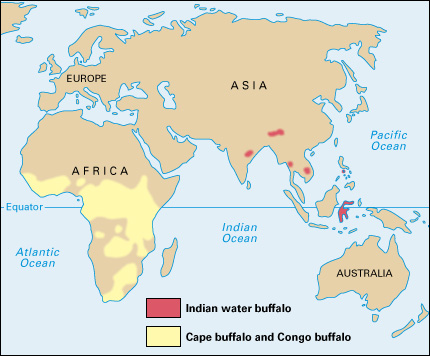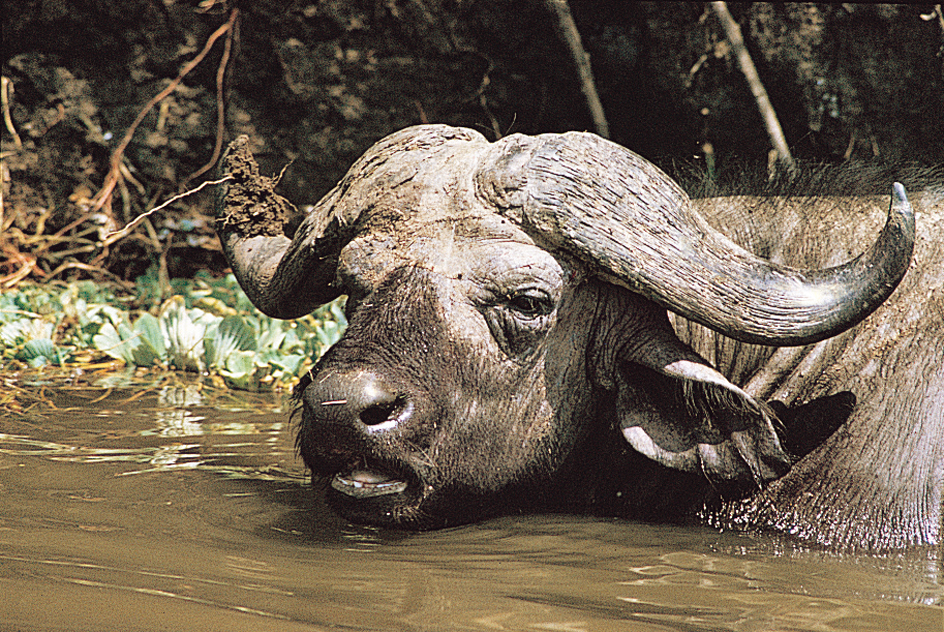Water buffalo. Several kinds of wild oxen may be called water buffaloes. Some have been domesticated and are among the most useful of all farm animals. The water buffalo of India is one of the largest of wild cattle. The bulls (males) are often 5 to 6 1/2 feet (1.5 to 2 meters) tall, and their horns may spread 12 feet (3.7 meters) from tip to tip, measured along the curve. The horns of the bull sweep out and back to form almost a circle, and are three-sided. The Indian buffalo’s hide is bluish black, and is easy to see through its thin hair. Wild Indian buffaloes graze in herds of about 50 animals. Both wild buffaloes and domesticated buffaloes have a keen sense of smell.
Water buffaloes like to wallow in the mud and water much of the day. They are fierce when wild, and a water buffalo is said to be a match for a large lion or tiger.
The Indian buffalo has made rice farming possible on a large scale in Asia. This powerful animal can plow knee deep in mud. The Indian buffalo has also been taken to many other parts of the world, including Australia, Brazil, Egypt, Hungary, Indonesia, Italy, the Philippines, Spain, and the United States.

Buffalo hide is tough and thick, and makes good leather. The milk of the cow is nourishing, with more fat than the milk of domestic cows. It is used in India for making a liquid butter.
The carabao is a smaller water buffalo of the Philippines. It is also important in farming. A native wild buffalo on Mindoro Island is called the tamarau. Africa is the home of two types of wild buffalo that are not actually water buffaloes. These are the big Cape buffalo, which has flattened horns, and the smaller Congo buffalo of central Africa.

